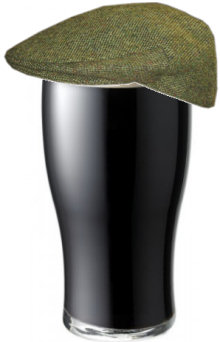 |
 |
|

|
|

|
 |
home
about
Protz
features
A-Z
books
|
|
Protz:
features
reviews
tastings
news & events
books
|

| |
Mild, but not so meek...
If trains are making a comeback, why shouldn't Mild Ale be on its way back, too? There's a connection between them: at the height of the railway boom in the 19th century, mild was the most popular
beer style in England.
While the rail network declined in the second half of the 20th century due to lack of investment and contraction, mild suffered its own version of the Beeching axe. The beer style refreshed an army of
blue-collar drinkers who needed refreshment from a beer that had some sweetness and less hoppiness than bitter.
But as industry dwindled the number of mild drinkers fell away. Mild hung on in its heartlands of the Black Country, south Wales and the North-west but in the rest of the country brewers delisted the beer.
| Some brewers kept their milds but changed the names to avoid an old-fashioned, cloth-cap image. McMullen's celebrated AK light mild was rebadged as a traditional bitter - it's not - while Banks's in
Wolverhampton now call their mild Original.
Perhaps the style can now hold its head up high and proudly declare itself to be mild and nothing other than mild as a result of the victory for Rudgate brewery in the Champion Beer of Britain
competition. In fact, it's the third time mild has won the championship this century, starting with Moorhouse's Black Cat in 2000, followed by Hobson's Mild in 2007.
The Rudgate victory could mark a tipping point. For its Ruby Mild is 4.4% and should prove the point that mild doesn't have to be low in alcohol.
Mild has suffered from a number of problems in a world obsessed with image. Not only was it seen as a beer consumed by old men who slept with their whippets but it was also derided as being too weak
for modern drinkers to contemplate. Worse, it had the reputation of being the beer that received the slops from other casks at the end of an evening session in the pub.
|
|
 |
Stricter beer quality in pub cellars these days has removed the slops problem. But the strength issue remains.
There is nothing wrong - and a lot to be said in favour - of drinking beers with a modest amount of alcohol. But historically mild was never a weak beer. The name came from its low level of hop bitterness, not a lack of alcohol.
Late in the 18th century, drinkers started to turn against the extreme roastiness and bitterness of the porters and stouts that dominated the market. As a result of both the industrial revolution and land enclosures, vast numbers of people were herded into towns and cities where they found work in factories.
After eight hours slog, people wanted refreshment. In particular they wanted ale with some unfermented sugar that would replace lost energy. Brewers were happy to respond with a beer that could be made quickly and profitably, and which didn't need long storage in wooden vats.
The early milds were not lacking in strength. At the turn of the 20th century, the average gravity of beer was 1065 degrees - that's around 6.5% in modern measurement. And most of that was mild ale. While we think of pale ale as the great beer of the 19th century, it was consumed mainly by the better-off middle class as it was more expensive than mild.
I imagine that brewers drastically reduced the strength of mild following World War Two to save on duty. It didn't do the style any favours. As the premium beer sector developed and imported lagers of around 5% became popular, mild quietly turned up its toes.
A tiny brewery in Sedgley in the West Midlands kept the true mild flag flying with Sarah Hughes Dark Ruby Mild. This weighs in at 6% and is based on a recipe from the 1920s. Rudgate, based near York, has followed this tradition with its Ruby Mild.
|
Rudgate's beer proves the point that mild doesn't have to be mild in character. It's brewed with pale, crystal and chocolate malts and hopped with English Challenger, American Cascade and Styrian
Goldings from Slovenia. It has a luscious aroma and palate, with powerful hints of toffee, liquorice, molasses and sultana fruit. The hops kick in with peppery and citrus fruit contributions as
well as light bitterness.
|
|
 |
It's a beer packed with flavour and character and the brewers (pictured receiving their award) are now coping with a demand that has doubled or trebled the current 30 barrels a week. I doubt,
however, that Ruby Mild or mild in general will get back to the volumes it once enjoyed.
Many years ago I visited a working men's club in Wolverhampton, close to Banks's brewery. A man known as Old Fred was pointed out to me. He was a retired miner, a man of such generous build that a pint of Banks's Mild looked like a thimble in his giant paw.
"He comes in at lunchtime and drinks 12 pints of mild," I was told. I gulped and asked what he did for the rest of the day. "He has a kip, comes back in the evening and has another 12," was the answer.
I doubt Old Fred is still with us and I would never recommend that level of consumption. But with the current concern for sensible drinking, it's time for mild to be restored to its rightful place as both a historic English beer style and an ale of character and taste.
|
|
home
about
Protz
features
A-Z
books
|